Last year, the realme 8i made waves for the insane amount of value that it brought to the mid-range segment. To recap it was a 12 thousand-peso phone running Android 11 on some serious hardware: 120Hz IPS LCD display, Helio G96 chipset, 50MP main camera and 16MP selfie camera, and a 5,000 mAh battery with 18W fast charging.
This is the baseline that we were working with as we review its successor, the realme 9i.
Hit play to watch the unboxing video, and continue reading for our full review.
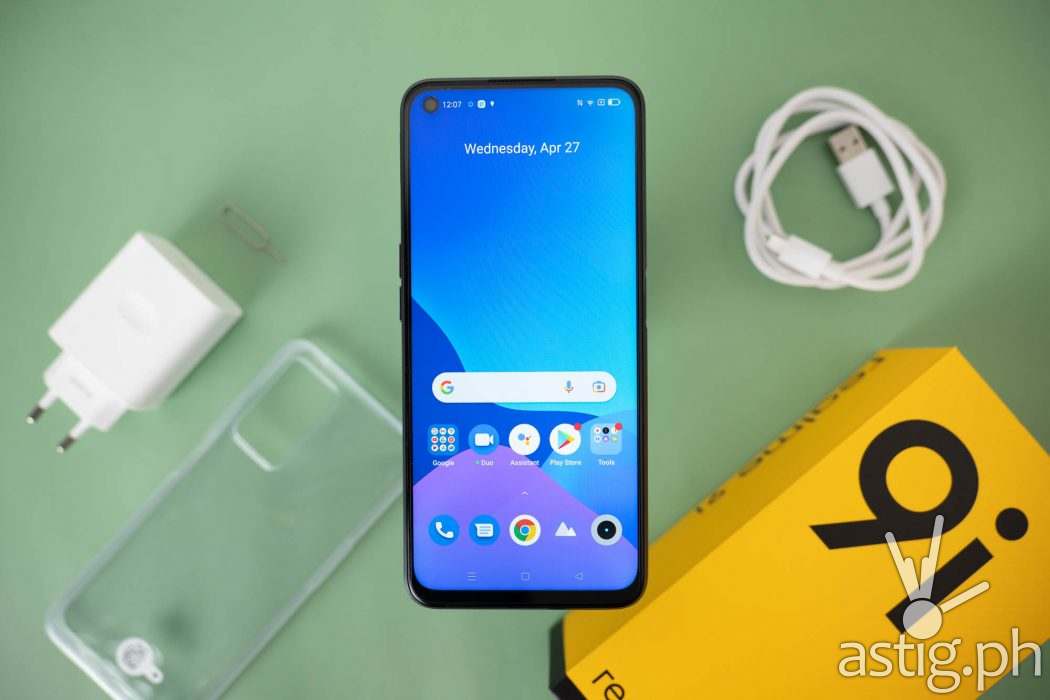
Display and design
realme’s product team appears to be taking it to a different direction this year though, downgrading its 6.6-inch IPS LCD display panel to 90Hz. While it may look that way on paper, there is barely any noticeable difference in user experience going from 90Hz to 120Hz.
Unlike the jump from 60Hz to 90Hz, you get diminishing returns as you go higher. For most users, 90Hz could be that “sweet spot” and anything beyond that would be barely noticeable.
We would gladly trade the missing 60Hz for something else, and the realme 9i has something that the realme 8i does not: dual stereo speakers.
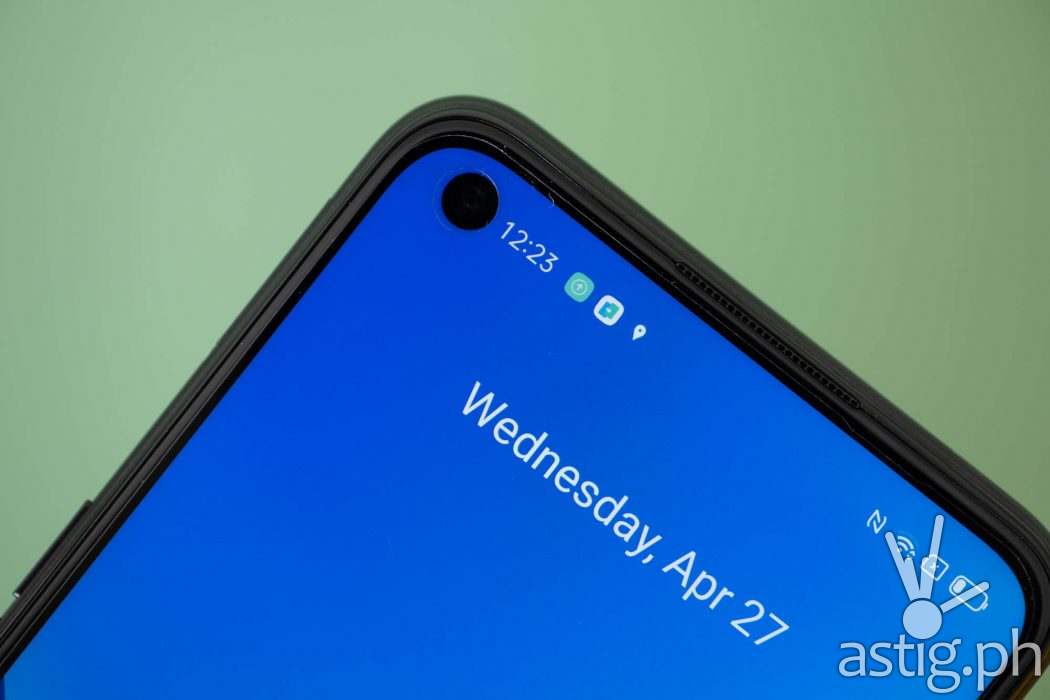
Do we need it? Not necessarily. Is it good? It’s awesome. Was it worth the trade? We think so, yes.
It’s not your half-baked “dual stereo” implementation too where the top speaker is significantly softer than the bottom one like an afterthought. The earpiece aka “top/left speaker” is substantially punchy, though it may lag behind the main speakers in depth and dynamic range.
The display panel itself is exceptional as far as IPS LCD technology goes: black levels are so deep that it can almost pass as true black when viewed from a well-lit room. The first time we held it, we had to double check using a display tester just to make sure it was really an LCD panel and not OLED.
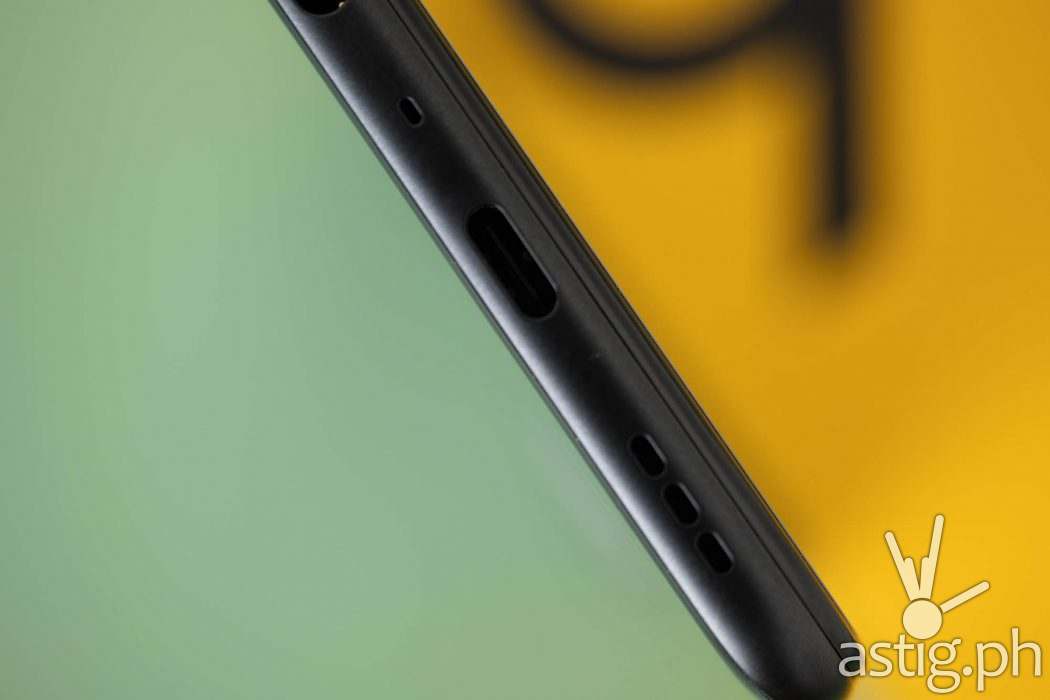
Everything else on the front is virtually identical to its predecessor, from the hole-punch notch located at the upper left corner to the thick chin which serves as a reminder that yes, you are still holding a budget device.
Button layout and I/O ports remain untouched: volume rocker to the right, USB-C port and 3.5mm audio jack at the bottom, and power button with embedded fingerprint scanner to the left.

It even rocks that triple-slot that we have come to love so you can have have two nano-sized SIM cards and a microSD memory card at the same time.
It’s great. It’s perfect. Don’t change it. Don’t touch it. Unless you’re unlocking your phone in which case, go nuts.
The rear panel tells a different story, though: that new holographic design is beautiful, even on the Black-colored review unit, which is rare. We usually find black phones dull and boring, but not on the realme 9i: a reflective pattern called “Stereo Prism Design” makes it shift and dance around like the matrix intro.
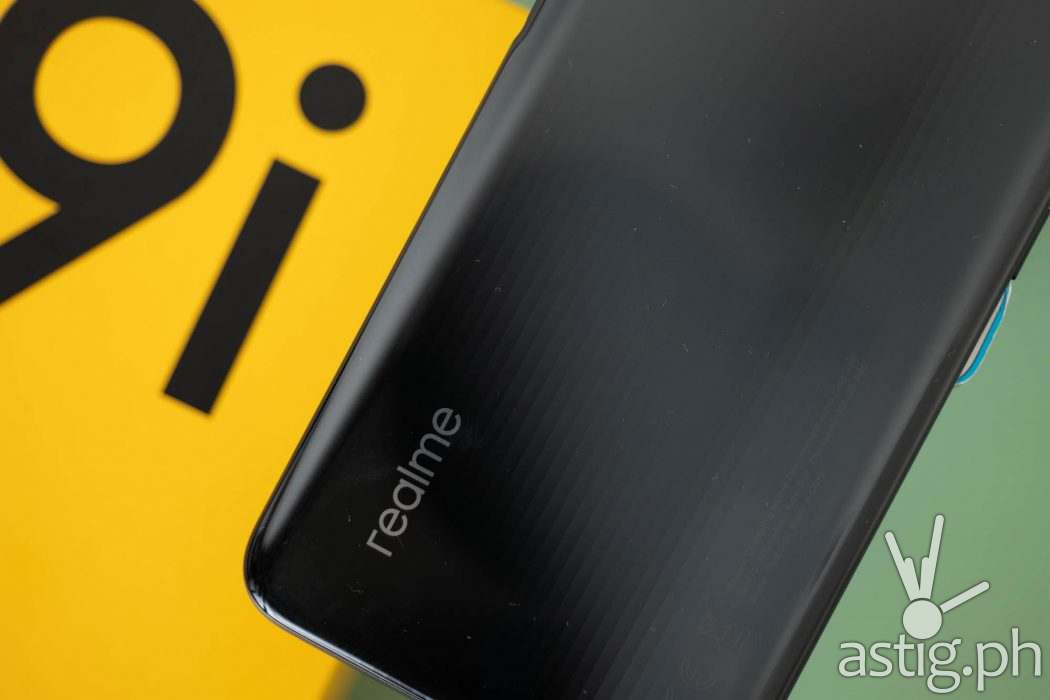
I legit stared at it, mesmerized for a good minute.
Under the hood, the realme 9i packs the 6nm Qualcomm Snapdragon 680 chipset. It is slower than the 12nm MediaTek Helio G96 on the realme 8i, but more battery efficient owing to its smaller fabrication process.
This can only mean longer usage times and better battery life compared to its predecessor. Despite having the same battery capacity at 5,000mAh, the realme 9i almost doubles its power intake to 33W.
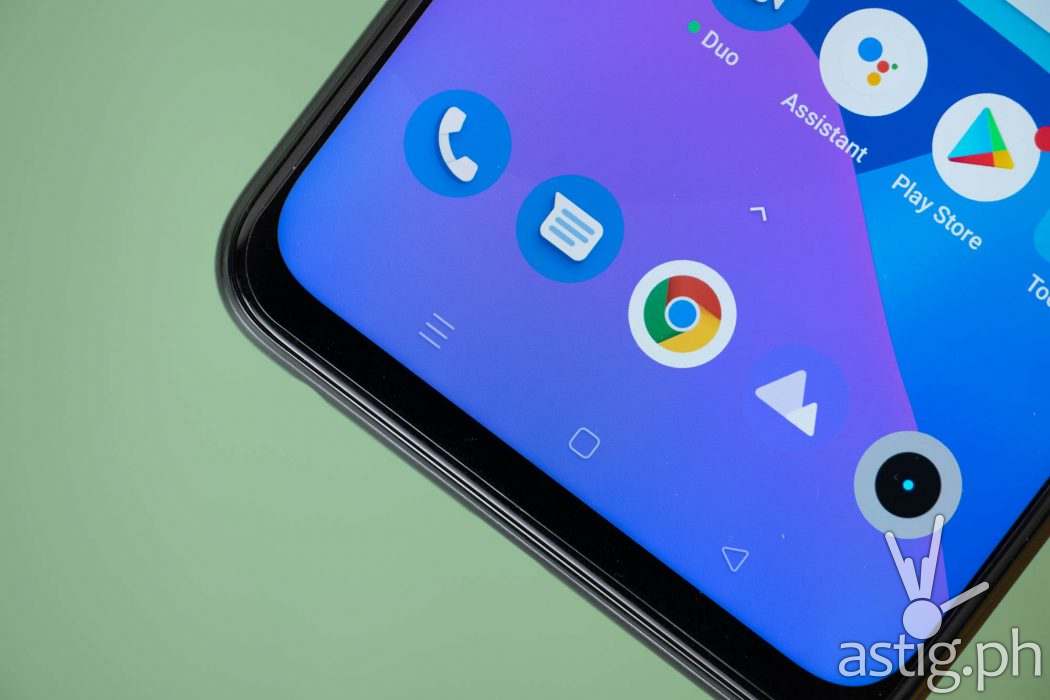
realme claims that the phone can charge from 0 to 100 percent in just 70 minutes or an hour and 10 minutes. realme also boasts a standby battery life of 694.25 hours – that’s at least 28 full days.
Performance and benchmarks
Like its predecessor, it runs Android 11 with realme UI 2.0 out of the box. Android 12 was originally planned for May 2022, but it seems that schedule has been pushed back to around July 2022.
It is coming for sure though – the only question is when.
Under the hood, the realme 9i is powered by Qualcomm’s 4G chipset, the Snapdragon 680. Engineered using the 6nm process, it is a tried and tested chipset found in many phones including the SAMSUNG Galaxy A23, HUAWEI nova 9 SE, and the Redmi Note 11.
Benchmark numbers place the realme 9i below the realme 8i: our retail unit only managed to get as high as 256523 points in AnTuTu, which is nowhere near the consistent 34000 points that the realme 8i usually gets. If benchmark numbers are your primary driver then you may as well stop reading and get the 8i now. The numbers do not lie, and the realme 8i is still a solid product – I’m sure realme will be happy you stuck with them than go to a competitor.
Speaking of competition, the realme 9i still manages to hold its own and yes, we’re still talking benchmark scores. It even beats the Dimensity 700 5G-powered moto G50 5G, one of our favorite budget 5G phones of 2021.
To our point: while benchmarks are a good, objective reference point, it is not the entire picture. Just because the realme 9i scored 256k points, it does not automatically make it slow. The UI is quite snappy and flows really well.
The phone comes with 4GB of physical memory, but it can be expanded by utilizing storage space through the RAM expansion feature. It is enabled by default, set to the minimum 1GB, but you can increase it to 3GB, bringing the total to 7GB.
We never really found the need to. The device runs smoothly as is.
Gaming and entertainment
Netflix would not appear when we search for it on the official Google Play Store for some reason, which was odd given the phone’s Widevine L1 certification. We were able to manually download and install the APK from the web without a hitch, and the app thankfully showed maximum playback resolution at full HD.
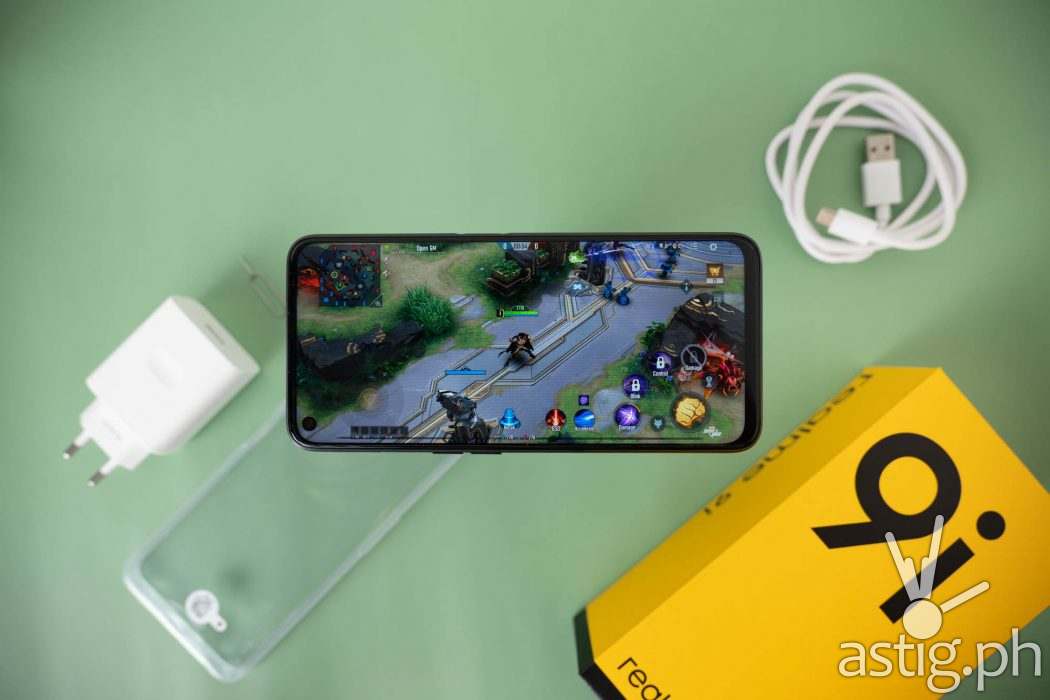
realme 9i does not support HDR, but the IPS LCD display panel is vivid and beautiful to view content with.
Those dual stereo speakers make the experience more enjoyable without a headset not only because of the stereo effect, it is actually quite decent too.
These benefits carry over to mobile gaming, which has been quite a joy. We were able to push most modern 3D games to High or even Maximum graphics settings and maintain a constant frame rate of 30FPS and above.

It had no problem handling MOBA games such as Marvel Super War, which was very comforting. Genshin Impact defaulted to the lowest setting, but we were able to bring it to medium settings and still get decent frame rates.
We were hoping we could push it to high, but Genshin Impact is such a graphically intensive game that will make even the most powerful devices cry.
Photography and content creation
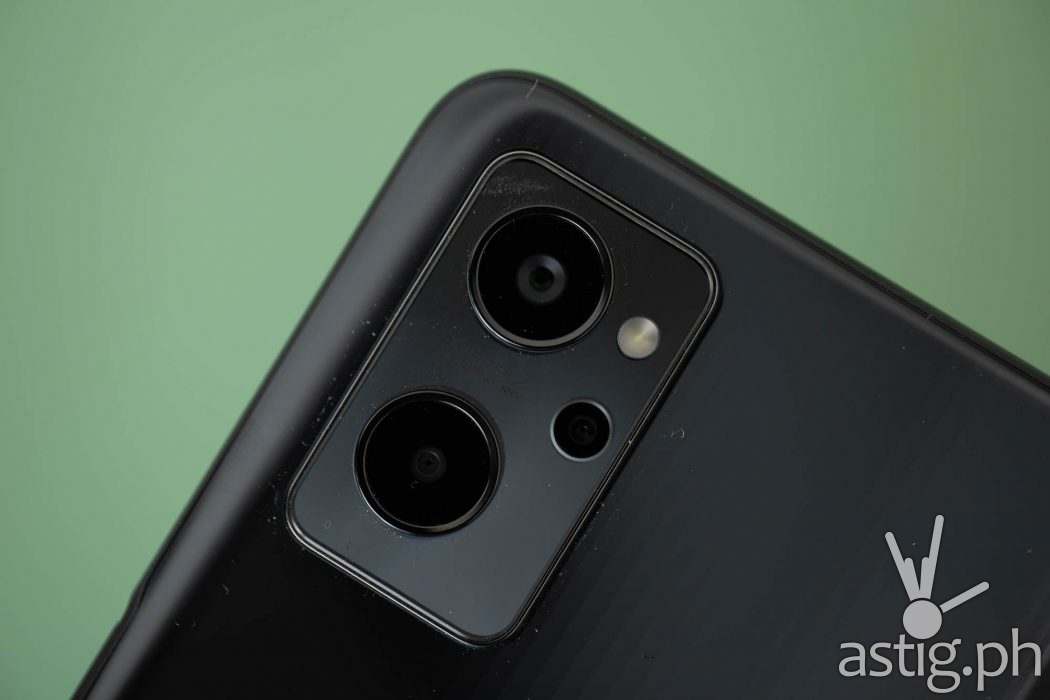
For photography and content creation, the realme 9i packs a 50MP main camera along with a 2MP macro camera and a passive 2MP depth sensor. Mind you, this is the same camera configuration found on the realme 8i, and since they both use the same stock camera software, we don’t expect to see a huge difference in image quality.
Modders might find Snapdragon to be a friendlier platform to run GCam though, and true enough, we were able to install the first mod that we found – GCam by MGC version 8.1, without a hitch.
Not that anyone would need it: the photos captured with the stock camera look really damn good already in our opinion – just check these out!
In general, photos were mostly sharp and noise levels were kept under control. Dynamic range takes a hit in limited lighting conditions, so we tried switching to Night Mode and the results were surprisingly good.
Even our sample video footage taken with the camera on auto looks good despite the highlights being blown out.
Battery life and fast charging
One of the advantages of having a chipset manufactured with a smaller, 6nm fabrication process is the lower power draw, which translates to better battery life. So far, our usage has yielded an average of 8 hours of screen on time.

We consider anything above 7 hours to be above the norm, so we are very pleased with these results.
Aside from this, another improvement over its predecessor is the increased charging throughput, going from 18W to 33W. This makes it possible to charge from zero all the way to 100% in just 70 minutes.
Closing thoughts
realme 9i is a long-life mid-ranger with dual loud speakers and decent cameras, making it good for content consumption and content creation.
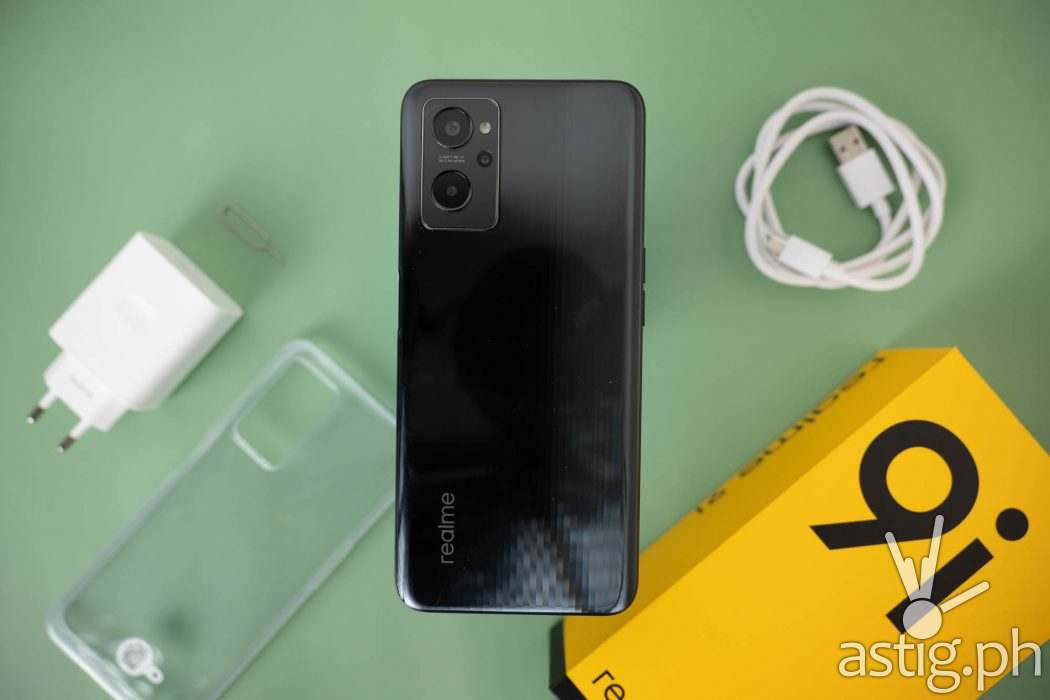
On paper, the realme 9i looks like a step back from the realme 8i in performance, evened out by improvements in battery life and audio.
The realme 9i will retail for P11,990 with 6+128GB of memory and storage, which is the same price that the realme 8i debuted at for the same memory and storage configuration.
The product page is already live on Shopee so you add it to your shopping carts ahead of time, but it will go on sale with a generous early bird discount for only P10,790 from May 5-7!
It will also be available in all realme official stores and partner dealers nationwide starting May 5.
realme 8 technical specifications (Philippines)
- Display: 6.6 inches; 1080 x 2412 pixels; IPS LCD, 90Hz
- SIM: Dual SIM (nano-SIM, dedicated slots)
- OS Android 11; realme UI 2.0
- Chipset (SoC): Qualcomm Snapdragon 680 4G
- CPU: Octa-core (4×2.4 GHz Kryo 265 Gold & 4×1.9 GHz Kryo 265 Silver)
- GPU: Adreno 610
- Memory (RAM) + storage: 6 GB + 128 GB
- Expansion: microSD (dedicated slot)
- Main camera (rear): 50MP f/1.8 (wide) + 2MP f/2.4 (macro) + 2MP f/2.4 (depth)
- Selfie camera (front): 16MP f/2.1
- Connectivity: 2.4/5 GHz Wi-Fi 802.11 b/g/n/ac; Bluetooth 5.0
- I/O: USB Type-C 2.0; 3.5mm audio jack; fingerprint scanner (side-mounted)
- Battery: 5,000 mAh; 33W fast charging
- Colors: Prism Black, Prism Blue
- Price (Philippines): 11,990 PHP (6GB + 128GB)
